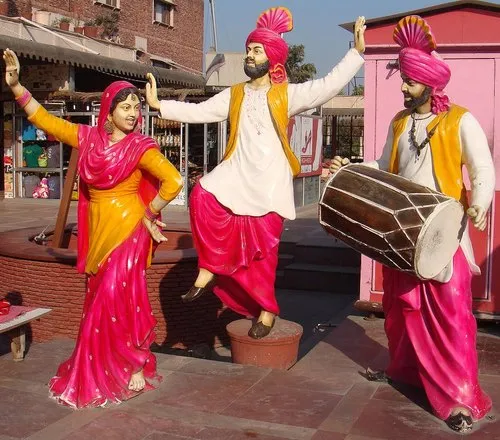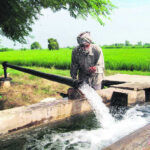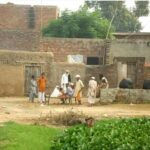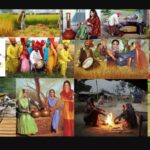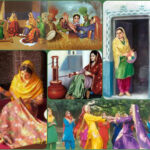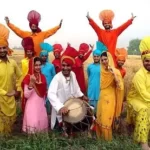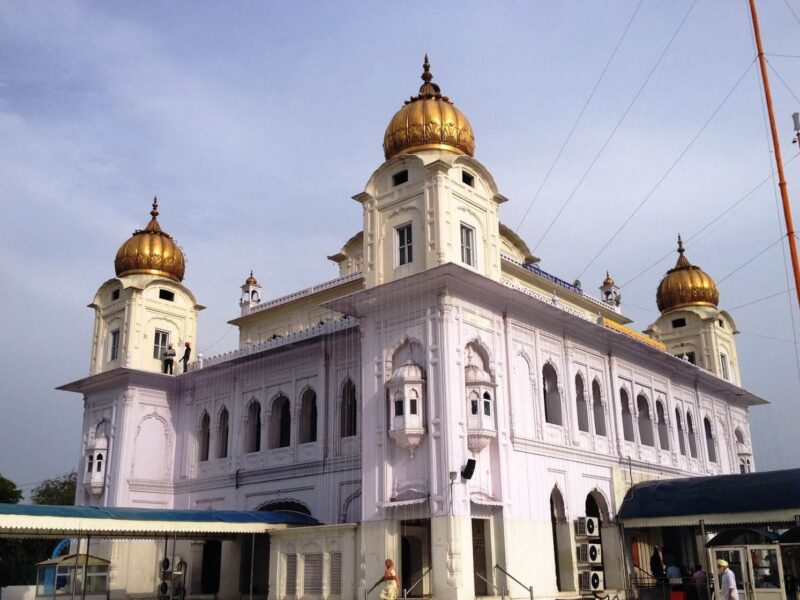
Cultural Diversity
The villages of Punjab are a microcosm of diverse cultures drawn from the historical fabric of migrations, invasions, and settlements in the area. This diversity is reflected in the unique blending of customs found in the language cuisine, festivals, and ceremonies. Village life is a dynamic mosaic of several aspects, ranging from the aromatic aromas of regional dishes like sarson da saag and makki di roti to the linguistic subtleties of Punjabi dialects.

Celebrations such as Lohri and Vaisakhi hold great cultural significance, and customs ingrained in daily life represent the synthesis of influences spanning millennia. This cultural kaleidoscope is evidence of Punjab’s communities’ ability to embrace and cherish variety in the face of changing times, as well as their resiliency.
Agricultural Heritage
The villages of Punjab represent the agricultural heritage of the area and are the backbone of its economy. These rural settings are characterized by endless lengths of rich farmland that support crops that have fed generations. Cultivated using traditional techniques, wheat, rice, and sugarcane represent the rural foundations that permeate village life.
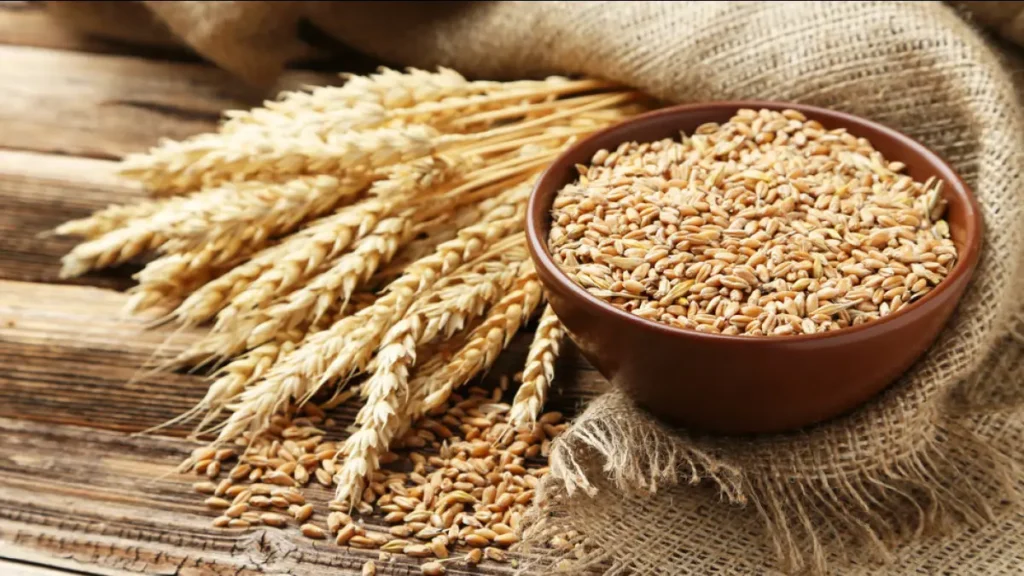
Communities are connected to the land and its abundance by the rhythm of planting, harvesting, and caring for fields. Punjab’s agricultural past shapes customs, celebrations, and the very fabric of rural life, supporting livelihoods while also fostering a deep connection to the land.

Dairy Farming In Punjab
Significance
Punjab is one of India’s leading states in dairy farming, contributing significantly to the country’s milk production. Dairy farming plays a crucial role in Punjab’s agricultural landscape, providing employment and income opportunities to numerous farmers.
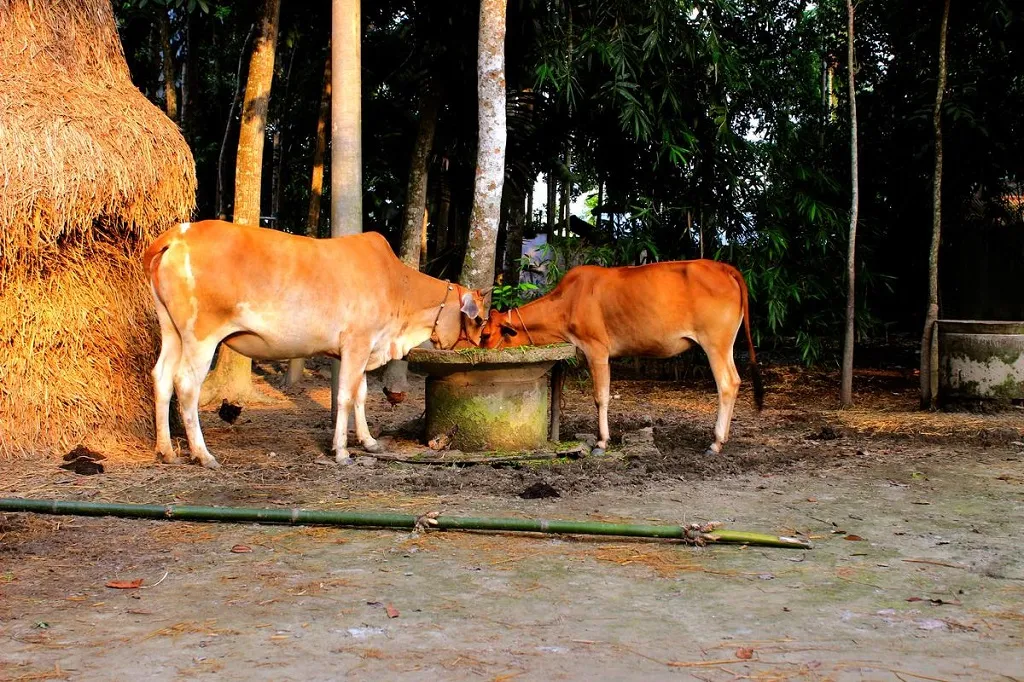
Cattle Breeds
Punjab primarily raises indigenous cattle breeds such as Sahiwal, Red Sindhi, and Gir, along with crossbreeds like Jersey and Holstein Friesian. These breeds are adapted to the local climate and are valued for their milk productivity.
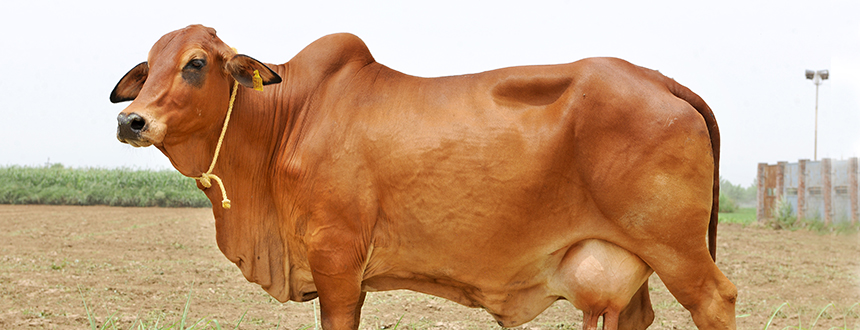
Milk Production
Punjab ranks among the top states in India in terms of milk production. The state’s favorable climate, availability of fodder, and well-established dairy infrastructure contribute to its high milk output.
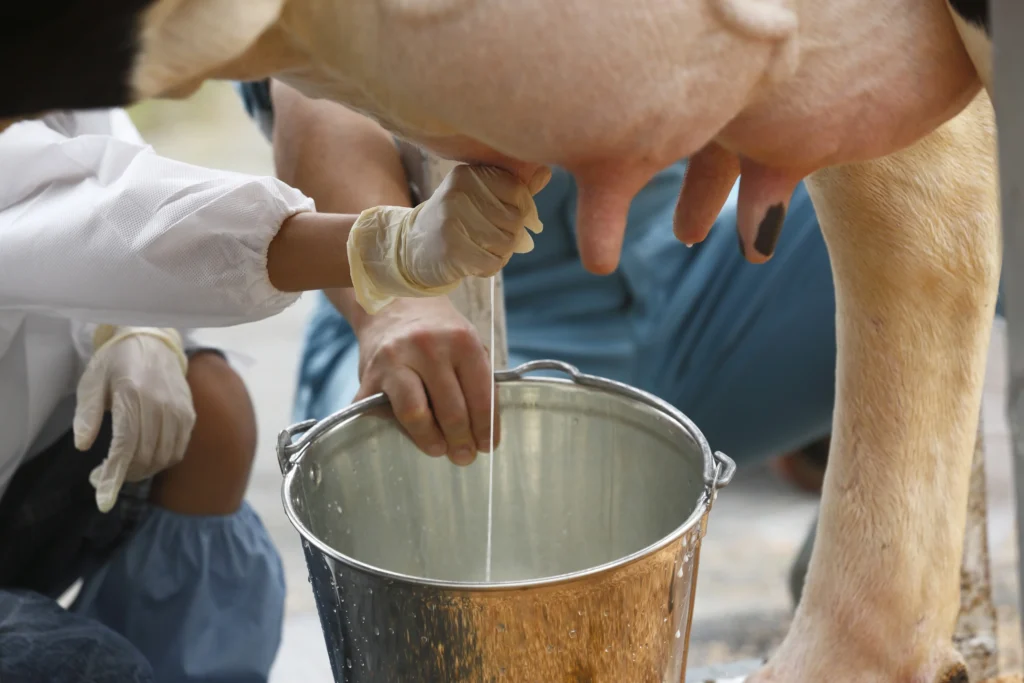
Community Life
In Punjab’s villages, the essence of community thrives, forming the cornerstone of social fabric and cohesion. Residents are deeply intertwined, sharing a collective spirit that transcends individual boundaries. Religious ceremonies pulsating with devotion, and community festivals, brimming with joy and camaraderie serve as focal points where bonds are reaffirmed and traditions upheld.
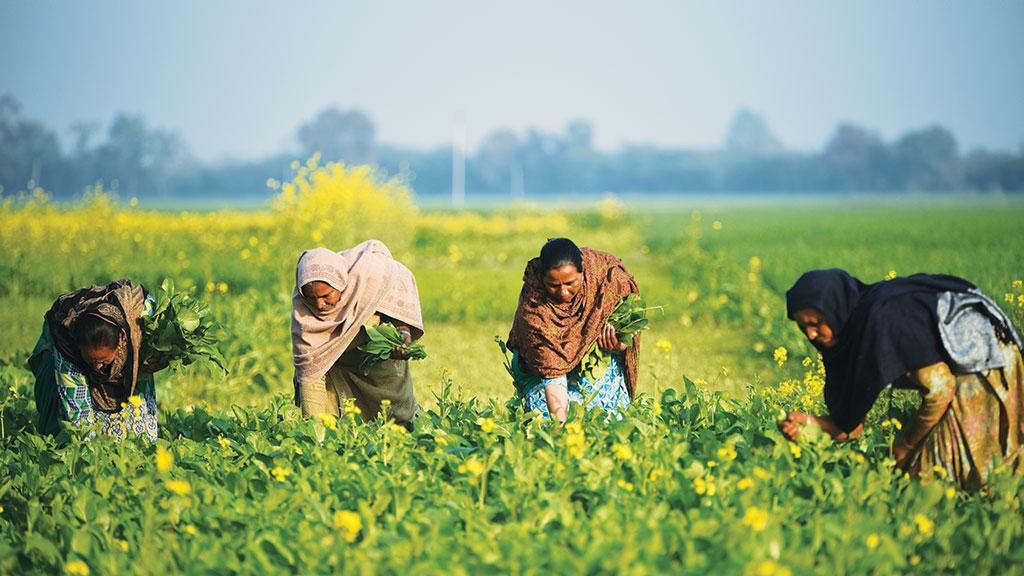
Beyond celebrations agricultural cooperatives symbolize collaborative ethos, where farmers pool resources and expertise for mutual benefit. This communal ethos not only fosters resilience in the face of challenges but also nurtures a pro found sense of belonging and interrelation weaving a tapestry of solidarity that defines the essence of village life in Punjab.
Punjabi Hospitality
Punjab is known for its friendly and giving villages, which are the epitome of hospitality. A culture of sincere warmth and care is extended to guests, who are welcomed with open arms. Offering a delicious look into the region’s culinary heritage, traditional Punjabi specialties, brimming with taste and scent, grace the tables.

In addition to food, hospitality customs such as passing along a drink of water or a warm embrace signify the ingrained custom of treating visitors as respected members of the family. This custom is evidence of the great importance village life places on interpersonal relationships and shared experiences, as well as the spirit of giving that permeates Punjabi culture.
Arts and Crafts
The villages of Punjab are the birthplaces of an abundant array of customary arts and crafts, each showcasing the mark of centuries-old artistry. Punjab’s cultural legacy is expressively expressed via the bright threadwork of phurkari embroidery, which depicts complex patterns and themes.
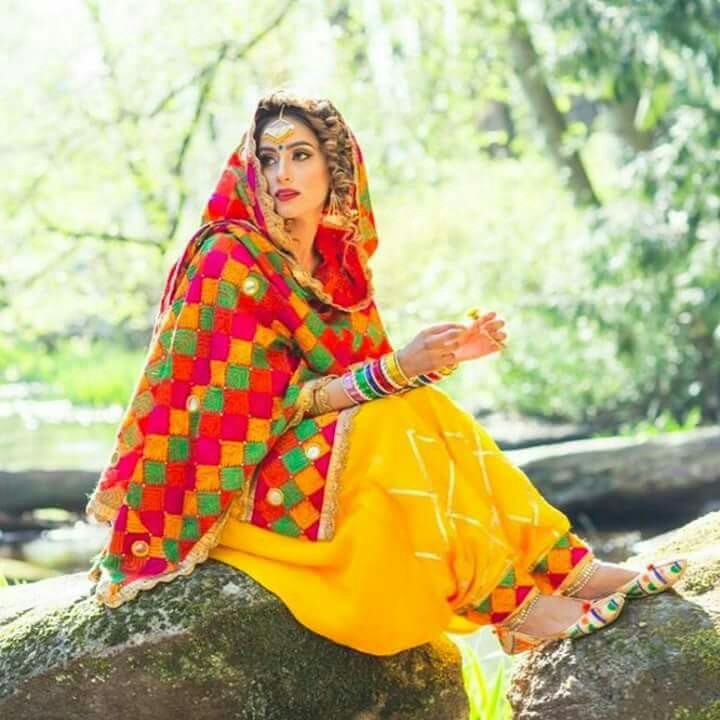
The craft of creating traditional Punjabi juttis, which combine fashion and utility, involves turning leather into beautiful shoes with elaborate decorations. Furthermore, the inventiveness of regional craftspeople is displayed in the pottery, which is created by deft hands to construct functional containers and ornamental items. These handcrafted customs, which have been passed down through the years, enhance Punjab’s rural communities’ cultural environment by safeguarding cultural legacies while also acting as sources of pride and identity.
Music and Dance
Dance and Music Village life is infused with an endless amount of energy and rhythm by song and dance, which are the beating heart of Punjabi culture. Tradition- and story-laden folk tunes reverberate through the atmosphere, spinning tales of celebration, bravery, and love. Bhangra, which represents the spirit of joy and unity, enthralls audiences with its contagious energy and throbbing beats and enthusiastic movements.
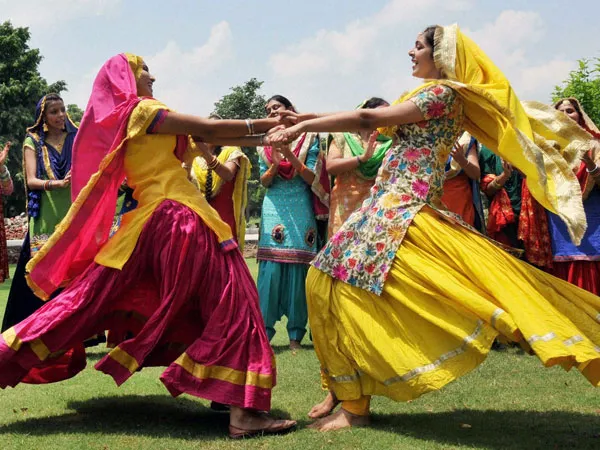
In a similar vein, Giddha honors the essence of gender and communal ties via elegant movements and upbeat rhythms. These folk dances, whether they are performed at festivals or at impromptu get-togethers, act as cultural bridges, bridging generations and reinforcing the rich history of Punjab’s artistic past in its rural communities.
Religious Heritage
The villages of Punjab are woven together with a tapestry of religious diversity, with mosques, mandirs and gurdwara serving as emblems of devotion and religion. Gurdwaras, with their characteristic flags and domes are places of spiritual refuge and tranquility for Sikhs encouraging sense of solidarity and camaraderie. Hindus use temples, which are aglow with elaborate sculptures and vibrant deities, as centers of devotion and introspection.
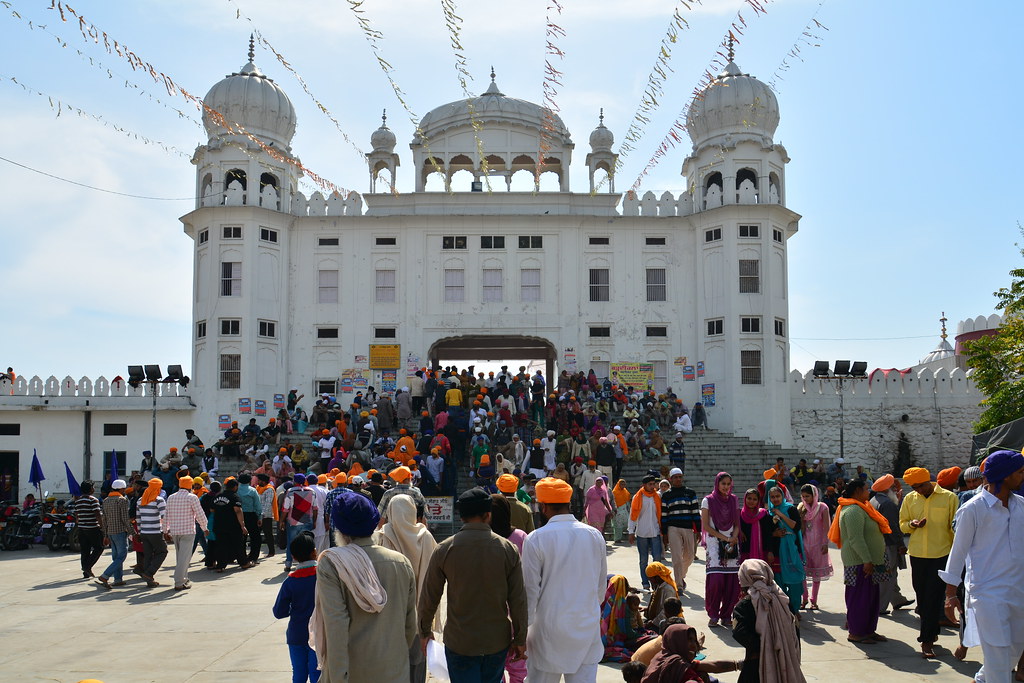
They represent customs and beliefs that date back hundreds of years. Mosques, on the other hand, invite the devout to engage in prayer and meditation with the divine through their elegant minarets and resounding calls to prayer. Festivals and rituals weave communities together throughout this religious tapestry, bridging religious divides to commemorate common ideals of harmony, love, and compassion.
Festivals and Celebrations
Year-round celebrations adorn the calendar, and the pulse of Punjab’s villages quickens to the rhythm of festive joy. Vaisakhi which marks the beginning of the spring harvest is celebrated by the peasants, who gather to dance the bhangra enjoy traditional foods and pay respects at gurdwaras. Diwali, the festival of lights represents the victory of light over darkness by illuminating homes and hearts with lamps fireworks, and happy gatherings. With bonfires and folk music Lohari welcomes the winter harvest with coziness and warmth.
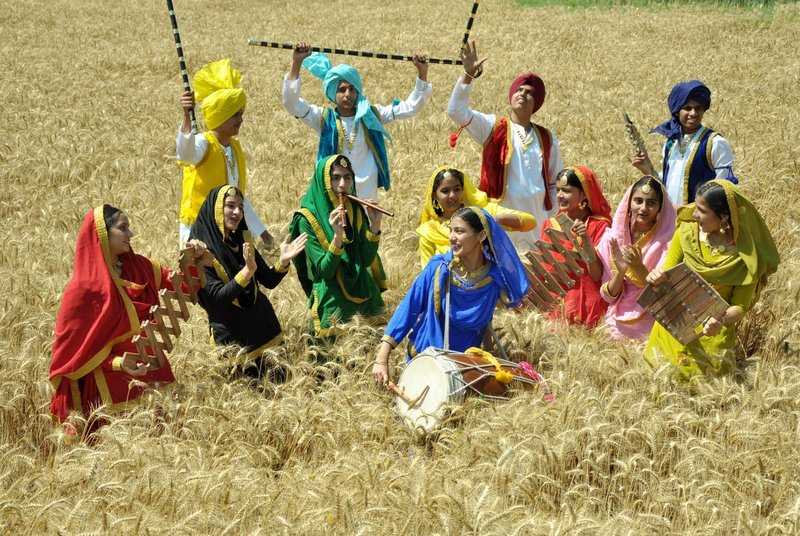
Gurudwaras are packed with communal meals and prayers on Gurpurab, the day that marks the birth or martyrdom of Sikh gurus. These holidays, rich in custom and meaning, honor not just religious holidays and natural cycles but also unite Punjab’s villages in tapestry of cultural vibrancy echoing the spirit of togetherness and shared heritage.
Traditional Clothing
The vivid colors and elaborate patterns of traditional Punjabi clothing cover Punjab’s villages, signifying the regions rich cultural legacy. Women wear the sophisticated salwar kameez charming outfit that consists of a long tunic (kameez), loose pants (salwar) and scarf (matching dupatta), all adorned with sparkling mirror work and embroidery. Men on the other hand, dress in the classic kurta-pajama combo of long tunics (kurtas) and baggy pants (pajamas), giving off an image of understated ease and elegance.
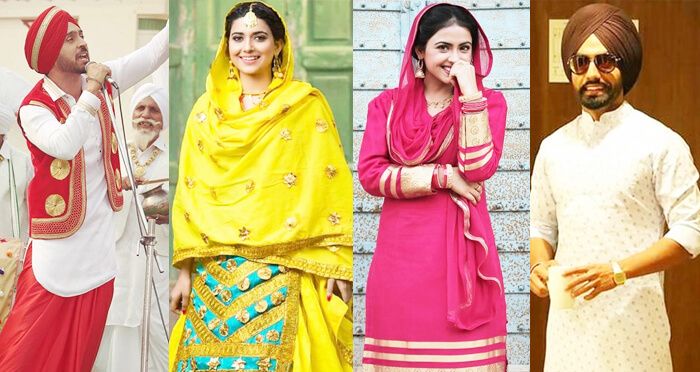
Immersed in history and symbolism, these clothes serve as platform for artistic expression showcasing the rich artisanal legacy of the region while also reflecting the pride and identity of Punjab’s people. Punjabi traditional garment weaves with every stich and thread. tapestry of cultural continuity and timeless beauty, embodying the essence of heritage and tradition.
Challenges and Changes
Punjab’s villages traverse a terrain of changing obstacles and paradigms while unwaveringly upholding cultural traditions. The younger generation is drawn to urbanization by the economic opportunities and contemporary conveniences it offers, which draws them away from their ancestors’ rural upbringing and causes demographic shifts and modifications to community dynamics. The social fabric of villages is altered by migration, which is motivated by the desire for a better living and creates a mosaic of varied experiences and viewpoints.
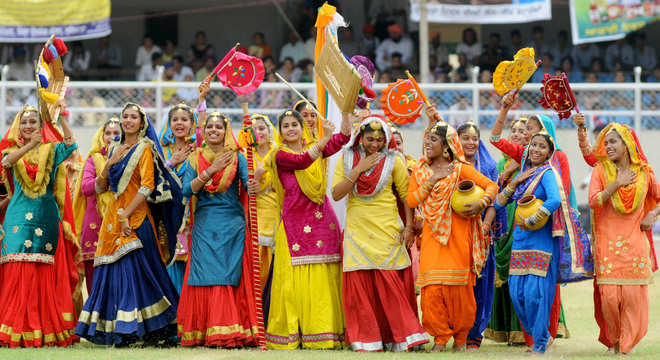
Modernization brings with it changes in lifestyle and technical breakthroughs that put ancient rural customs and rhythms to the test. Punjab’s villages, however, are resilient in the face of these winds of change, welcoming innovation while preserving the core of their cultural legacy.
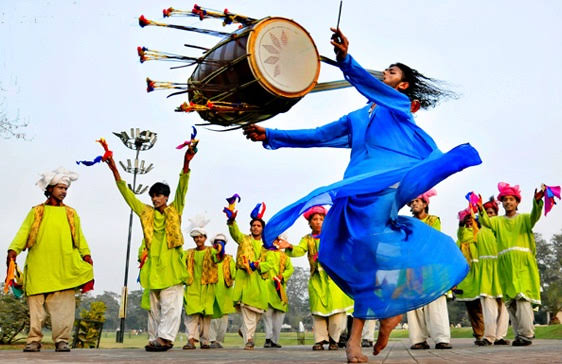
The constant interaction between the new and the old fosters an attitude of adaptation and continuity, enriching village culture with a tapestry of tradition and innovation that echoes the resilience and adaptability of Punjab’s communities.
